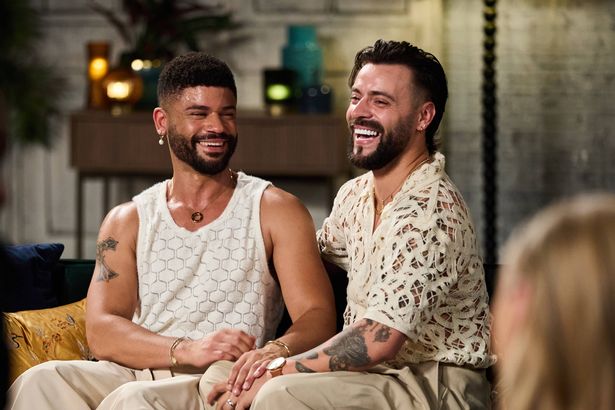Married At First Sight UK has come to an end and a series of bombshell splits have been announced
Married At First Sight UK has reached a dramatic conclusion, leaving viewers curious about which couples are still going strong beyond the cameras.
The hit E4 programme has delivered an absolutely explosive series packed with shocking revelations. From Julia-Ruth’s bombshell about getting matching ink with another groom and texting someone else, to devastating break-ups – this series has truly had everything.
However, only five couples managed to reach the final vows ceremony, with four deciding to continue their romances in the real world.
Now that the latest Married At First Sight UK series has wrapped up, we’ve examined which couples made it to those crucial final vows and who’s still together after filming ended.
This follows a series of surprising separation announcements. So which pairs are actually still loved-up? reports OK!.
Davide and Keye – separated
Fan favourites Davide and Keye breezed through their final vows and took their romance into the real world. Nevertheless, it’s now been revealed that the pair are no longer an item.
The duo confirmed their break up this month after Keye admitted to using dating app Grindr, which a devastated Davide uncovered. In a social media statement, Davide revealed the two were no longer speaking but said he “wished Keye the best”.
Confirming their split, Keye said: “In the early hours of a Sunday morning, while Davide was on a flight, I downloaded Grindr. I want to be clear that I was not looking to cheat, hook up, or find someone else. I was in a dark and fragile place and reached for something unhealthy because I did not know how else to cope.
“What I was seeking had nothing to do with intimacy. It was an attempt to escape emotions I could not sit with, and I reached for substances when what I really needed was support.”
He added: “When Davide found my profile through his, it cost me my marriage. That is something I carry with me every day.”
Leigh and Leah – separated
Viewers will recall the devastating final vows as both Leigh and Leah chose to end their relationship there and then.
Leigh confessed the couple had battled with their communication along with trust issues, whilst Leah spoke about the strain and uncertainty as she revealed she felt she was being put on “trial”.
The pair remain apart, with Leah seemingly dating someone new since leaving the programme whilst Leigh appears to be single at present.
Bailey and Rebecca – separated
Despite keeping a solid relationship going throughout the series and delivering touching final vows, Rebecca and Bailey revealed their break up after filming wrapped.
Rebecca simply posted on Instagram: “To answer all the questions…. Yes, he fumbled.”
Meanwhile, in an extensive statement, Bailey revealed: “Unfortunately it’s time to share that Bec and I are no longer together…
“We tried our best to navigate life after the experiment, and although we spent a lot of great time together on the outside, unfortunately the relationship came to an end. I still have a lot of love for Bec and I’m grateful for the amazing relationship we shared. I had fallen for Bec completely and it really was a true love story.”
He went on to say he accepts responsibility for his role in the relationship breakdown, describing it as “heartbreaking”.
Leisha and Reiss – separated
Leisha and Reiss faced their share of communication struggles during their MAFS UK journey but departed the experiment determined to make their romance work.
Nevertheless, it was subsequently revealed the pair had parted ways.
It seems their communication difficulties persisted beyond the show as Leisha was spotted in floods of tears during an emotional reunion episode.
In a heartfelt Instagram post, Leisha penned: “This experience has taught me that my worth is not defined by someone else’s ability to value it. I may have lost him, but in the process, I found me.”
Abi and John – still together
Abi and John remain the sole couple from the series who are still loved-up and going strong.
The duo stayed solid throughout their MAFS UK adventure, despite arriving as latecomers to the experiment. Earlier this week, John took to Instagram to share some news, stating they had an “announcement to make” before confirming that the couple are still going strong.
In a subsequent post, John revealed that they’ve been spending more time in North Wales, with Abi responding to his update: “Best feeling ever is to step into our new lives together! Wales = Home.”
Married At First Sight UK is available to stream on Channel 4 online

